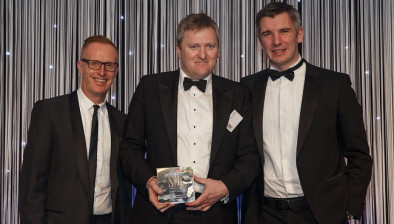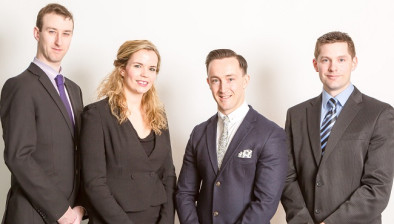Andy MacDonald: ‘To the best of my recollection’ – the importance of witness evidence

Andy MacDonald
Andy MacDonald examines recent case law on issues relating to witness evidence.
In the recent cases of Henderson vs. Benarty Medical Practice and Brown vs. Sestras, the issue of witness evidence has benefitted from further debate.
Henderson vs. Benarty Medical Practice [2022] CSOH 28
In early 2018, Ms Henderson became aware of unusual symptoms around a cut on her finger. On 26 February 2018 she spoke with a pharmacist before scheduling a GP appointment for the following day. The appointment was cancelled due to the pursuer’s ill health so it was rescheduled for February 28. However that appointment was also cancelled that very morning by telephone. After her symptoms worsened, Ms Henderson attended A&E where she was diagnosed with sepsis and required multiple life-changing amputations.
The pursuer’s position was the GP surgery caused a number of delays, and a delay in treatment, which led to her injuries. Her position was she had not cancelled the appointment on 28 February 2018. The pursuer made some concessions, including that she failed to attend the surgery on the afternoon of February 27 as she was ill and fell asleep. Her evidence was of two phone calls on February 28 during which she described worsening symptoms to two receptionists of the GP surgery. She contended these failures amounted to a breach of the surgery’s duty of care towards her.
An important witness for the defender was one of the GP surgery receptionists. She noted that on the February 28 the surgery was contacting patients due to adverse weather (colloquially, the “Beast from the East”), for which reason the date was memorable to her. It was her position that it was Ms Henderson who cancelled the appointment and she produced a note in April 2018 detailing the nature of the February phone call following a complaint from the pursuer.
The proceedings focused on the call of the morning of February 28. The hearing took place several years later, meaning the reliability and credibility of the witness evidence given by the pursuer and the receptionists was key.
Lady Wise took the view that although the pursuer believed what she was saying was true, her position was “not tenable when examined in the context of other unchallenged evidence”. Inconsistencies in the pursuer’s evidence led Lady Wise to find in favour of the defender.
At Paragraph 48, Lady Wise referred to Lord Pearce’s judgement in Onassis v Vergottis [1968] Lloyd’s LR 403 (at Paragraph 431), noting:
“the issue of credibility includes not just issues of whether a witness is truthful or untruthful but whether the memory of a generally truthful witness has correctly retained information… a witness, however honest, rarely persuades a judge that his present recollection is preferable to that which was taken down in writing immediately after the accident occurred. Therefore, contemporary documents are always of the utmost importance.”
Brown vs. Sestras [2023] EWHC 1220 (KB)
Mr Brown was involved in a road traffic accident and suffered life-changing injuries as a result. His vehicle, a Peugeot, was suddenly “undertaken” by a “dark car” driven by the first defendant which was tailgating the Peugeot immediately prior to this. This caused the claimant’s driver (his mother and the third defendant) to lose control of the vehicle – it left the road and ended up down an embankment into a field. By coincidence, at the material time, the claimant found his shoes uncomfortable and removed his seatbelt momentarily to remove his shoe. As this action coincided with the collision, he suffered the most severe injuries of those involved in the crash. The dark car proceeded to leave the scene without stopping.
The claimants identified the first defendant, Mr Sestras, as the driver of the dark car (later confirmed as a black Mercedes-Benz). He disputed this, claiming that although he was driving a black Mercedes in the area at the relevant time, he was not involved in the accident.
As in Henderson, the reliability and credibility of witness evidence was paramount. The Court was presented with an anonymous police call from a phone box, accident reconstruction experts and a 999 call recording from a passenger of the Peugeot. In addition, the passengers of the Peugeot gave evidence. In this matter, the hearing took place six years after the accident.
HHJ Howells found that despite some inconsistencies in the evidence of the passengers, they were trying as best they could to provide an accurate version of events. She determined the first defendant had been driving the Mercedes, with particularly helpful evidence coming from a then 13-year-old passenger of the Peugeot who had recalled an “impressively detailed account”. HHJ Howells noted he was “straightforward and candid in his account. He was an impressive, careful witness who made sensible concessions.”
HHJ Howells found in favour of the claimants against the first defender and dismissed the claim against the third defender.
Gestmin SGPS SA v Credit Suisse (UK) Ltd & Anor. [2013] EWHC 3560 (Comm)
A common theme in the foregoing cases is their reference to Gestmin as a leading case regarding the assessment of witness evidence. As a case from the then Queen’s Bench, this carries strong precedent in England & Wales and can be considered a persuasive case in Scotland. The facts of the case are not necessary for an understanding of the substance of Leggatt J’s position.
The judgement considers the matter of “Evidence based on recollection” at Paragraphs 15-23. The core of Leggatt J’s analysis can be summed up simply at Paragraph 15: “An obvious difficulty which affects allegations and oral evidence based on recollection of events which occurred several years ago is the unreliability of human memory.” He notes that two common errors are to suppose: “(1) that the stronger and more vivid is our feeling or experience of recollection, the more likely the recollection is to be accurate; and (2) that the more confident another person is in their recollection, the more likely their recollection is to be accurate.”
The fallibility of memory is well-known and it is generally accepted that contemporaneous evidence will be considered to be of more value than witness recollections several years after the fact. It must be remembered in any litigation (and in particular in an adversarial legal system such as that present in Scotland), parties are not seeking a “pure truth”. Instead, they are seeking to represent their respective positions as best as they can within the parameters of the rules of litigation with a view to the success of their favoured party at proof or trial. As Leggatt J puts it at Paragraph 19: “A desire to assist, or at least not to prejudice, the party who has called the witness or that party’s lawyers, as well as a natural desire to give a good impression in a public forum, can be significant motivating forces.”
Leggatt J reflects that many factors may affect the memory of a witness and the validity of their evidence. This includes but is not limited to:
- Witnesses being asked to make a statement after a significant amount of time has passed.
- Their statement being drafted by lawyers with (i) a knowledge of all the evidence gathered; and (ii) knowledge of the salient points of litigation.
- Witnesses “refreshing” their memories by reading documents or viewing CCTV.
- Witnesses reviewing documents which include information to which they would not have been privy at the time of the incident.
- Reviewing their own statement prior to giving evidence at proof or trial.
As it was, in Gestmin Leggatt J took the following approach at Paragraph 22:
“The best approach for a judge to adopt in the trial of a commercial case is […] to place little if any reliance at all on witnesses’ recollections of what was said in meetings and conversations, and to base factual findings on inferences drawn from the documentary evidence and known or probable facts. [… The value of oral testimony] lies largely […] in the opportunity which cross-examination affords to subject the documentary record to critical scrutiny and to gauge the personality, motivations and working practices of a witness, rather than in testimony of what the witness recalls of particular conversations and events.”
Discussion
Leading witness evidence is an essential component of proofs and trials. It is vital to be in a position to take a view on what a witness is likely to say once they are in the witness box, always in the knowledge that witnesses may change their position, make concessions (both reasonable and otherwise), and indulge in digressions which may be unhelpful.
Being able to rely on a witness can make or break a case. Contemporaneous evidence will always be a strong factor and ought to be, in most cases, preferred to an oral witness testimony where a conflict arises.

Andy MacDonald is a senior solicitor at Digby Brown









